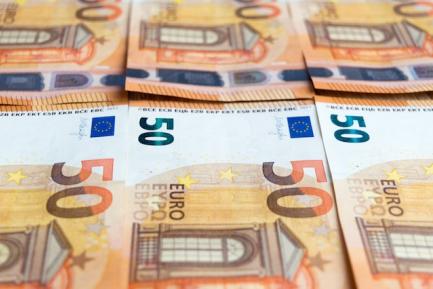The effectiveness of fiscal policy in times of COVID
After analysing the extent of the fiscal boost in Germany, Spain, France and Italy to counteract the COVID-19 crisis, we examine the following question: which countries have taken more efficient and better fiscal measures?

- Given the sharp increase in public debt, the quality, and not just the quantity, of the fiscal measures taken to combat the COVID crisis is crucial.
- During the containment phase, the measures taken by the governments of the four largest euro area countries were highly effective in preventing a sharp increase in unemployment and corporate bankruptcies.
- During the recovery phase, the challenge is to combine protection while also facilitating resource reallocation and driving growth.
Last month we analysed the size of the fiscal stimulus introduced to combat the coronavirus crisis in the four main European countries: Germany, Spain, France and Italy. Surprisingly, we learned that, while the amount of the support measures appears to be highly disparate from country to country, the fiscal stimulus that will materialise in each country in 2020 (measured as the change in the government budget balance relative to the GDP forecast in 2020) will be quite similar.
The next question, of course, is: while each country will end up spending a similar percentage of its GDP, which countries have taken more efficient and higher-quality fiscal measures?
In normal times, to answer this question we would look at the impact that each line of public expenditure has had on growth in the past (i.e. its «fiscal multiplier»). For instance, we know that investment in infrastructure generally tends to have a higher «multiplier» than tax cuts.
But these are not normal times. Today, to answer this question we have to split the current crisis into two phases: the virus containment phase and the recovery phase. During the virus containment phase, the priority is to reduce disruptions to the labour market and to businesses, so as to maintain the productive fabric of the economy and prevent viable companies from going bankrupt or employees who will be needed once the containment phase has passed from becoming unemployed. The main reason for this is the costs (both in time and money) that are involved in creating new companies or in searching for new jobs or employees: why incur those costs if they can be avoided and if these workers and companies can be protected during this phase? During the recovery phase, higher-quality fiscal measures will be those that have the greatest impact on growth, but also those that provide the most impetus to the reallocation of factors (including workers and capital) to the sectors that will be most viable in the aftermath of the crisis.
To assess the measures taken during the containment phase of this crisis, we need to look at their impact on the labour market and on the solvency and liquidity of firms.
The temporary workforce reduction programmes have established themselves as a key economic policy in Germany (Kurzarbeit), Spain (ERTE), France (chômage partiel) and Italy (CIGS).1 In May, in the midst of the virus containment phase, a considerable portion of the labour force was covered by such temporary workforce reduction programmes (more than 45% in France and Italy and around 25% in Germany and Spain). Were these programs, in which these countries invested a great deal of money, effective in preventing large increases in unemployment and costly breaks in employee-employer relations? To answer this question, for each country we can investigate the relationship that usually exists between economic activity and the unemployment rate, known as Okun's law: given the vast declines in GDP registered in Q1 and Q2 2020, we will compare the rise in the unemployment rate predicted by this relationship with the increase that actually occurred. The results are surprising.
In the first chart, we can see that the predictions according to Okun's law generally serve as a good indicator for unemployment in the euro area. During the 2009 crisis, this model predicted a rise in unemployment very similar to that which actually occurred. However, during the first two quarters of 2020, Okun’s law predicted a sharp rise in unemployment which failed to materialise. The difference between the actual increase in the unemployment rate and that predicted by Okun’s law is a measure of the success of the policies implemented to protect jobs. In the second chart, we can see this difference by country. According to this measure, Spain was the country which prevented the greatest increase in unemployment, through its ERTE programmes. In Germany, however, the observed unemployment rate is similar to that predicted by Okun’s law, perhaps due to the prevalence of the Kurzarbeit even before this crisis.
- 1. See the Focus «What can we expect from Spain’s ERTEs and similar furlough programmes? A European perspective» in the MR07/2020 for further details on the institutional design of the various schemes.

We have seen how the measures taken to avoid disruptions to the labour market were highly effective. Is this also the case for the measures taken to protect businesses? In order to prevent businesses that will actually remain viable in the aftermath of this crisis from going out of business during the containment phase, European countries introduced measures such as the deferral of tax payments, loan guarantees for companies, subsidies and debt moratoriums to improve corporate liquidity. If one measure of the effectiveness of these policies is the prevention of a large wave of bankruptcies, it can be said that they have had impressive effects, since according to the national statistics the number of corporate insolvencies fell by 38.2% in Spain in Q2 2020 compared to the previous year, while in France it fell by 25.1% and in Germany, by 8.7%.2 That is, in the face of the greatest economic shock that has ever occurred in the euro area, there are significantly fewer insolvencies occurring than normal. This surprising fact, which no doubt partly reflects the difficulties in filing for administration during the lockdown,3 leads us to consider the importance of a strategic shift in fiscal policy once the containment phase has passed.
Once the economic shock is over, efforts should focus on the economic recovery in order to spur growth and avoid further scarring. But this will require more than just a conventional fiscal stimulus. The economic and sociological shock has been so profound that it is already bringing about structural transformations in economies. For this reason, policies should address economic transformation and facilitate the reallocation of resources to new emerging sectors. While some of the companies that avoided bankruptcy thanks to the fiscal policies taken during the containment phase may no longer be viable in the post-COVID world, opportunities will emerge in other sectors such as technology or healthcare. Fiscal measures will therefore need to facilitate these transitions at the lowest economic cost. The challenge will lie in combining the protection that is still needed for certain sectors and groups with this reallocation of resources in a context of high uncertainty.
For instance, the experience with temporary workforce reduction programmes shows that they are very effective in cushioning temporary shocks, but they lose effectiveness if they are drawn out over time. Thus, in the medium term, it will be important that other measures such as wage subsidies emerge in order to create incentives to resume production.4 Similarly, loan guarantees will lose prominence, while streamlining insolvency proceedings will be important in order to minimise disruptions caused by bankruptcies of companies that are no longer viable.
Finally, the sharp rise in public debt that the COVID-19 crisis will cause highlights how important it is for fiscal policy to be efficient, with the greatest possible impact on growth for every euro spent. In this regard, the empirical evidence5 shows that, of all types of expenditure, public investment has the largest multiplier. That is, it has the greatest impact on growth, higher than that of tax cuts or direct aid to households. In this way, governments could combine a growth strategy with the transformation of their economies into greener, more digital economies.
- 4. See O. Blanchard, T. Phillippon and J. Pisani-Ferry (2020). «A new policy toolkit is needed as countries exit COVID-19 lockdowns». Peterson Institute for International Economics Policy Brief 20-8.
- 5. See OECD (2009). «The effectiveness and scope of fiscal stimulus». OECD Economic Outlook, Interim Report March.

- 1. See the Focus «What can we expect from Spain’s ERTEs and similar furlough programmes? A European perspective» in the MR07/2020 for further details on the institutional design of the various schemes.
- 2. According to the National Statistics Institute of Spain, the Banque de France and Destatis.
- 3. In addition, the effect of the economic environment on insolvencies usually occurs with a certain delay.
- 4. See O. Blanchard, T. Phillippon and J. Pisani-Ferry (2020). «A new policy toolkit is needed as countries exit COVID-19 lockdowns». Peterson Institute for International Economics Policy Brief 20-8.
- 5. See OECD (2009). «The effectiveness and scope of fiscal stimulus». OECD Economic Outlook, Interim Report March.


